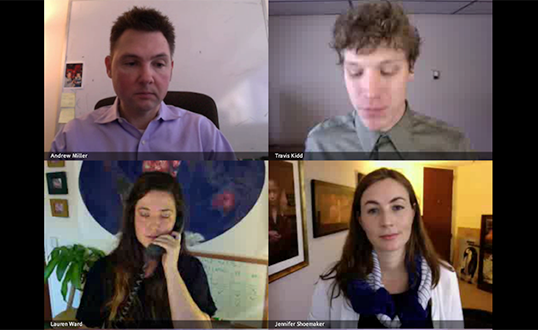Ask NASA Climate | February 4, 2014, 11:18 PST
NASA scientists prep for their moment in the spotlight
You probably already knew that NASA scientists spend a lot of their time analyzing data and mulling over results. But there’s a lot more to being a NASA scientist than that. One of the coolest things about the job is getting a chance to go on camera to talk to the public, share the latest research, and get people excited and involved. This year is especially exciting because of NASA’s five new Earth missions.
So, just like you would, we pose, primp, preen, prep and PRACTICE so that we’ll be ready for our moment in the spotlight. TV stations access live feeds directly from NASA, which means that we have to learn how to connect to an audience we can’t see.

For broadcasts using a computer camera, we get together and give each other feedback, such as making sure that our faces are centered in the frame.

And when the lights come up and the camera goes on, we stare straight into that lens and smile.

So be sure to keep an eye out for one of our NASA scientists coming to a screen near you in 2014.
I look forward to reading your comments.
Laura
